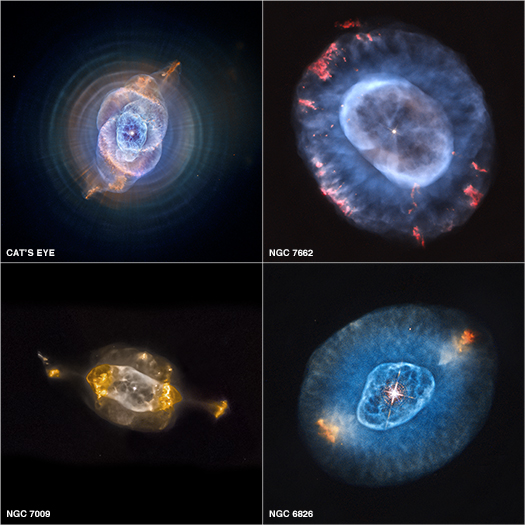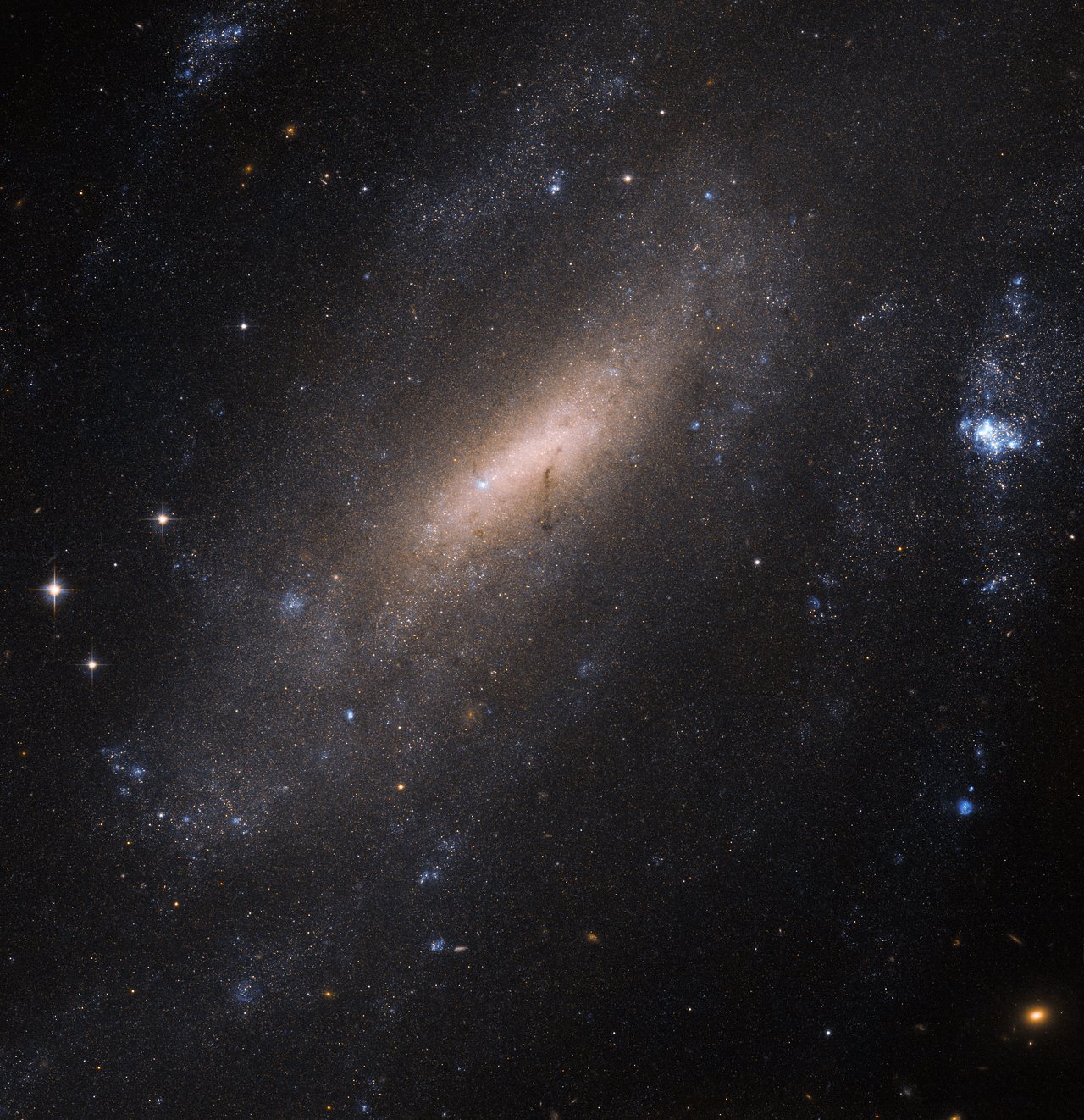|
NGC 7015
NGC 7015 is a spiral galaxy located about 203 million light-years away from Earth in the constellation Equuleus (constellation), Equuleus. NGC 7015's calculated velocity is . NGC 7015 was discovered by French astronomer Édouard Stephan on September 29, 1878. NGC 7015 has two symmetric inner arms, with multiple long and continuous outer arms. It is also host to a supermassive black hole with an estimated mass of 8.2 × 107 Solar mass, M☉. NGC 7015 is a member of a group of galaxies known as the NGC 7042 Group. This group contains ten galaxies, with the group named after its brightest member, NGC 7042. Besides NGC 7015, the group also contains, NGC 7025, NGC 7042, NGC 7043, and IC 1359. See also * NGC 1300 * Barred spiral galaxy * NGC 7003 * List of NGC objects (7001–7840) References External links * Spiral galaxies Equuleus NGC objects, 7015 UGC objects, 11674 Principal Galaxies Catalogue objects, 066076 Astronomical objects discovered in 1878, 18780929 Discove ... [...More Info...] [...Related Items...] OR: [Wikipedia] [Google] [Baidu] |
New General Catalogue
The ''New General Catalogue of Nebulae and Clusters of Stars'' (abbreviated NGC) is an astronomical catalogue of deep-sky objects compiled by John Louis Emil Dreyer in 1888. The NGC contains 7,840 objects, including galaxy, galaxies, star clusters and emission nebulae. Dreyer published two supplements to the NGC in 1895 and 1908, known as the ''Index Catalogues'' (abbreviated IC), describing a further 5,386 astronomical objects. Thousands of these objects are best known by their NGC or IC numbers, which remain in widespread use. The NGC expanded and consolidated the cataloguing work of William Herschel, William and Caroline Herschel, and John Herschel's ''General Catalogue of Nebulae and Clusters of Stars''. Objects south of the Celestial sphere, celestial equator are catalogued somewhat less thoroughly, but many were included based on observation by John Herschel or James Dunlop. The NGC contained multiple errors, but attempts to eliminate them were made by the ''Revised New Ge ... [...More Info...] [...Related Items...] OR: [Wikipedia] [Google] [Baidu] |
Astronomical Objects Discovered In 1878
Astronomy is a natural science that studies celestial objects and the phenomena that occur in the cosmos. It uses mathematics, physics, and chemistry in order to explain their origin and their overall evolution. Objects of interest include planets, moons, stars, nebulae, galaxies, meteoroids, asteroids, and comets. Relevant phenomena include supernova explosions, gamma ray bursts, quasars, blazars, pulsars, and cosmic microwave background radiation. More generally, astronomy studies everything that originates beyond Earth's atmosphere. Cosmology is a branch of astronomy that studies the universe as a whole. Astronomy is one of the oldest natural sciences. The early civilizations in recorded history made methodical observations of the night sky. These include the Egyptians, Babylonians, Greeks, Indians, Chinese, Maya, and many ancient indigenous peoples of the Americas. In the past, astronomy included disciplines as diverse as astrometry, celestial navigation, observational a ... [...More Info...] [...Related Items...] OR: [Wikipedia] [Google] [Baidu] |
Principal Galaxies Catalogue Objects
Principal may refer to: Title or rank * Principal (academia), the chief executive of a university ** Principal (education), the head of a school * Principal (civil service) or principal officer, the senior management level in the UK Civil Service * Principal dancer, the top rank in ballet * Principal (music), the top rank in an orchestra Law * Principal (commercial law), the person who authorizes an agent ** Principal (architecture), licensed professional(s) with ownership of the firm * Principal (criminal law), the primary actor in a criminal offense * Principal (Catholic Church), an honorific used in the See of Lisbon Places * Principal, Cape Verde, a village * Principal, Ecuador, a parish Media * ''The Principal'' (TV series), a 2015 Australian drama series * ''The Principal'', a 1987 action film * Principal (music), the lead musician in a section of an orchestra * Principal photography, the first phase of movie production * "The Principal", a song on the album ''K- ... [...More Info...] [...Related Items...] OR: [Wikipedia] [Google] [Baidu] |
UGC Objects
UGC may refer to: Organisations * Canadian Geophysical Union, official abbreviation in French (Union géophysique canadienne) * UGC (cinema operator), a European cinema chain, formerly Union Générale Cinématographique * UGC Fox Distribution, a former French-American film production company formed in 1995 * Union Graduate College, Schenectady, New York * United Grain Company, a Russian grain trading company based in Moscow * University Grants Commission (other) * University Grants Committee (other) * UnitedGlobalCom, former name of the cable TV operator Liberty Global * UnderGround Crips, an African American street gang mainly from Los Angeles, California Science and technology * Universal gravitational constant G, in physics * Uppsala General Catalogue, an astronomical catalogue of galaxies * UGC, a codon for cysteine * Unique games conjecture, a conjecture in computational complexity Other * User-generated content User-generated content (UGC), a ... [...More Info...] [...Related Items...] OR: [Wikipedia] [Google] [Baidu] |
NGC Objects
The ''New General Catalogue of Nebulae and Clusters of Stars'' (abbreviated NGC) is an astronomical catalogue of deep-sky objects compiled by John Louis Emil Dreyer in 1888. The NGC contains 7,840 objects, including galaxies, star clusters and emission nebulae. Dreyer published two supplements to the NGC in 1895 and 1908, known as the ''Index Catalogues'' (abbreviated IC), describing a further 5,386 astronomical objects. Thousands of these objects are best known by their NGC or IC numbers, which remain in widespread use. The NGC expanded and consolidated the cataloguing work of William and Caroline Herschel, and John Herschel's '' General Catalogue of Nebulae and Clusters of Stars''. Objects south of the celestial equator are catalogued somewhat less thoroughly, but many were included based on observation by John Herschel or James Dunlop. The NGC contained multiple errors, but attempts to eliminate them were made by the ''Revised New General Catalogue'' (RNGC) by Jack W. ... [...More Info...] [...Related Items...] OR: [Wikipedia] [Google] [Baidu] |
Equuleus
Equuleus is a faint constellation located just north of the celestial equator. Its name is Latin for "little horse", a foal. It was one of the 48 constellations listed by the 2nd century astronomer Ptolemy, and remains one of the 88 modern constellations. It is the second smallest of the modern constellations (after Crux), spanning only 72 square degrees. It is also very faint, having no stars brighter than the fourth magnitude. Notable features Stars The brightest star in Equuleus is α Equulei, traditionally called Kitalpha, a yellow star magnitude 3.9, 186 light-years from Earth. Its traditional name means "the section of the horse". There are few variable stars in Equuleus. Only around 25 are known, most of which are faint. γ Equulei is an α2 CVn variable star, ranging between magnitudes 4.58 and 4.77 over a period of around 12½ minutes. It is a white star 115 light-years from Earth, and has an optical companion of magnitude 6.1, 6 Equulei. It is divisible in ... [...More Info...] [...Related Items...] OR: [Wikipedia] [Google] [Baidu] |
Spiral Galaxies
Spiral galaxies form a class of galaxy originally described by Edwin Hubble in his 1936 work ''The Realm of the Nebulae''Alt URL pp. 124–151) and, as such, form part of the Hubble sequence. Most spiral galaxies consist of a flat, rotating disk containing s, gas and dust, and a central concentration of stars known as the bulge. The ... [...More Info...] [...Related Items...] OR: [Wikipedia] [Google] [Baidu] |
List Of NGC Objects (7001–7840)
This is a list of NGC objects 7001–7840 from the New General Catalogue (NGC). The astronomical catalogue is composed mainly of star clusters, nebulae, and galaxies. Other objects in the catalogue can be found in the other subpages of the list of NGC objects. The constellation information in these tables is taken from ''The Complete New General Catalogue and Index Catalogue of Nebulae and Star Clusters by J. L. E. Dreyer'', which was accessed using the "VizieR Service". Galaxy types are identified using the ''NASA/IPAC Extragalactic Database''. The other data of these tables are from the SIMBAD Astronomical Database unless otherwise stated. 7001–7100 7101–7200 7201–7300 7301–7400 7401–7500 7501–7600 7601–7700 7701–7800 7801–7840 See also * Lists of astronomical objects This is a list of lists, grouped by type of astronomical object. Solar System * List of Solar System objects * List of gravitationally rounded objec ... [...More Info...] [...Related Items...] OR: [Wikipedia] [Google] [Baidu] |
NGC 7003
NGC 7003 is a spiral galaxy around 220 million light-years from Earth in the constellation Delphinus. NGC 7003 has an estimated diameter of 85,000 light-years. The galaxy was discovered by German astronomer Heinrich Louis d'Arrest on August 26, 1864. One supernova has been observed in NGC 7003: on May 12, 2011, SN 2011dk ( type II, mag. 16.5) was discovered. The redshift of NGC 7003 places it in a filamentary ridge in the Perseus–Pisces Supercluster. The galaxy is host to a supermassive black hole with an estimated mass of 3.9 × 107 M☉. See also * NGC 1300 * List of NGC objects (7001–7840) This is a list of NGC objects 7001–7840 from the New General Catalogue (NGC). The astronomical catalogue is composed mainly of star clusters, nebulae, and galaxies. Other objects in the catalogue can be found in the other subpages of the list of ... References External links Astronomical objects discovered in 1864 Spiral galaxies 11662 Delphinus 7003 065887 +03 ... [...More Info...] [...Related Items...] OR: [Wikipedia] [Google] [Baidu] |
Barred Spiral Galaxy
A barred spiral galaxy is a spiral galaxy with a central bar-shaped structure composed of stars. Bars are found in about two thirds of all spiral galaxies in the local universe, and generally affect both the motions of stars and interstellar gas within spiral galaxies and can affect spiral arms as well. The Milky Way Galaxy, where the Solar System is located, is classified as a barred spiral galaxy. Edwin Hubble classified spiral galaxies of this type as "SB" (spiral, barred) in his Hubble sequence and arranged them into sub-categories based on how open the arms of the spiral are. SBa types feature tightly bound arms, while SBc types are at the other extreme and have loosely bound arms. SBb-type galaxies lie in between the two. SB0 is a barred lenticular galaxy. A new type, SBm, was subsequently created to describe somewhat Barred irregular galaxy, irregular barred spirals, such as the Magellanic Clouds, which were once classified as irregular galaxies, but have since been found t ... [...More Info...] [...Related Items...] OR: [Wikipedia] [Google] [Baidu] |
NGC 1300
NGC 1300 is a barred spiral galaxy located about 1 E23 m, 65 million light-years away in the constellation Eridanus (constellation), Eridanus. The galaxy is about 130,000 light-years across. It is a member of the Eridanus Cluster, a cluster of 200 galaxies, in a subgroup of 2-4 galaxies in the cluster known as the NGC 1300 Group. It was discovered by John Herschel in 1835. Nucleus In the core of the larger spiral structure of NGC 1300, the nucleus shows a "Grand design spiral galaxy, grand-design" spiral structure that is about 3,300 light-years long. Only galaxies with large-scale bars appear to have these grand-design inner disks — a spiral within a spiral. Models suggest that the gas in a bar can be funneled inwards, and then spiral into the center through the grand-design disk, where it can potentially fuel a central supermassive black hole (SMBH). NGC 1300 is not known to have an active nucleus, indicating that its central black hole is not accreting matter. The SMBH h ... [...More Info...] [...Related Items...] OR: [Wikipedia] [Google] [Baidu] |




